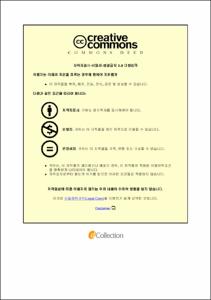부산 기장군 소재 영유아 급식소 조리종사자에 대한 손씻기 인식에 미치는 홍보 및 교육의 영향
- Alternative Title
- A Study on Younger Children Food Service Workers’ Awareness of Hand-washing and Effects of P. R. and Education Thereof: Focused on Gijang-gun, Busan
- Abstract
- In order to improve the sanitary management at younger children food service centers, the researcher conducted a questionnaire survey on cooks’ awareness of hand-washing, and the effects of education and P. R. on their hand-washing. The purpose of this study is to provide some basic data useful to make a plan for the education and P. R. for cooks’ hand-washing.
This study conducted a survey on 62 cooks who were working for the younger children food service centers and surveyed them with a self-administered questionnaire. The data collected thus were processed using the statistical program IBM SPSS 25 for frequency analysis, descriptive statistics and chi square test.
The results of this study can be summarized as follows; First of all, it was found that 23 cooks (37.1%) were in their 40’s, while 31 ones (50%) had graduated from high schools or lower educational institutions. 24 cooks (38.7%) had worked for the food service centers for 1~3 years. Lately, they have washed their hands 21.18 times a day. The frequency of their washing hands with soap was 16.27 times a day. As a result of assessing their hand-washing habits on a 4-point scale, it was found that the part washed most frequently was palm (3.97), followed by back of hand (3.90), fingers (3.71), parts between fingers (3.68), lace (3.63), parts under the nails (3.18) and wrists (3.15). 58 cooks (93.5%) had ever been educated on hand-washing, while only 4 cooks (6.5%) had not been educated. The average times of the education on hand-washing were 2.62 times. 24 cooks (41.4%) thought that the most effective organizer of education on hand-washing had been children’s food service center. For the question “Have you ever viewed an advertisement or P. R. material for the last 1 year?”, 57 cooks (91.9%) said “Yes”, while 5 of them (8.1%) answered “No”. The most effective method of advertisement and P. R. about hand-washing was measured with multiple answers. 42 cooks (67.7%) answered that TV had been most effective.
The above results of this study suggest that this study should be followed up by future studies about hand-washing education and P. R. Besides, it is deemed essential to develop a systematic education program and operate it with some effective policy supports.
- Issued Date
- 2021
- Awarded Date
- 2021. 2
- Type
- Dissertation
- Publisher
- 부경대학교
- Affiliation
- 부경대학교 글로벌수산대학원
- Department
- 글로벌수산대학원 식품산업공학과
- Advisor
- 전병수
- Table Of Contents
- Ⅰ. 서론 1
Ⅱ. 본론 5
1. 이론적 배경 5
1.1. 영유아시설의 급식 운영 5
1.1.1. 집단급식소의 정의 5
1.1.2. 집단급식소의 현황 5
1.1.3. 영유아 시설의 운영 6
1.1.4. 영유아 시설의 현황 6
2. 전국 손씻기 실태조사 8
2.1. 지역사회 건강조사 8
2.1.1. 시·도별 외출 후 손씻기 실천율 8
2.1.2. 기장군 외출 후 손씻기 실천율 10
2.1.3. 기장군 연간 손씻기 교육 및 홍보 경험률 11
3. 연구내용 및 방법 12
3.1. 조사 대상 및 기간 12
3.2. 조사 내용 및 방법 12
3.2.1. 측정도구 12
3.2.2. 일반적 특성 13
3.2.3. 하루 동안 손씻기 실태 13
3.2.4. 주요 장소별 손씻기 습관 13
3.2.5. 손씻기 관련 인식수준 13
3.2.6. 손씻기 교육 노출도 14
3.2.7. 손씻기 관련 광고/홍보에 대한 평가 14
3.3. 자료 분석 방법 14
4. 연구 결과 및 고찰 15
4.1. 연구대상의 일반적 특성 15
4.2. 하루 동안 손씻기 실태 17
4.3. 주요 장소별 손씻기 습관 19
4.3.1. 가정생활 중 손씻기 습관 19
4.3.2. 외출 시 손씻기 습관 21
4.4. 손씻기 관련 인식수준 22
4.5. 손씻기 교육 노출도 24
4.6. 손씻기 관련 광고 / 홍보에 대한 평가 26
4.7. 연관성 검증 28
4.7.1. 손씻기 교육받은 경험에 따른 부위별 손 씻는 습관 28
4.7.2. 손씻기 광고/홍보물 본 경험에 따른 부위별 손 씻는 습관 28
4.7.3. 손씻기 교육받은 경험에 따른 교육 필요성 인식 31
4.7.4. 손씻기 교육받은 경험 횟수에 따른 손씻기 횟수 32
4.7.5. 급식소 규모에 따른 하루 손씻기 횟수 32
Ⅲ. 결론 34
Ⅳ. 참고 문헌 37
부록 : 설문지 40
감사의 글 45
- Degree
- Master
- Files in This Item:
-
-
Download
 부산 기장군 소재 영유아 급식소 조리종사자에 대한 손씻기 인식에 미치는 홍보 및 교육의 영향.pdf
기타 데이터 / 620.23 kB / Adobe PDF
부산 기장군 소재 영유아 급식소 조리종사자에 대한 손씻기 인식에 미치는 홍보 및 교육의 영향.pdf
기타 데이터 / 620.23 kB / Adobe PDF
-
Items in Repository are protected by copyright, with all rights reserved, unless otherwise indicated.